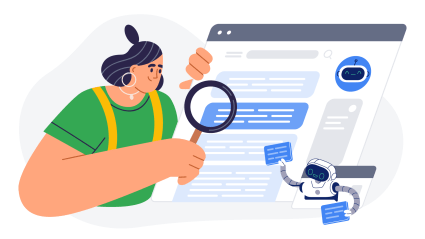Search engine optimization deals a lot with logic and problem solving. Often times this includes figure out what works best for a client, where their web site stands, and how they can improve upon it. With this comes some of the more technical aspects of SEO (URL restructuring, 301 redirects, cannonicalization issues, site maps, etc.), but there are also a lot of common sense aspects such as web site content.
SEO content analysis can be both tricky and simple. Content can be well-written and garner attention, interest, desire and action yet do nothing for search engine rankings. On the flip side, content can be poorly written and not convert, yet rank well in search engines. The trick with content is finding a happy medium between these two extremes that satisfies both search engines and potential customers.
So where can you start with optimizing content? For most small to medium sized web sites, content solutions may be more straight forward. Content can come in the form of resource sections, FAQs, industry news feeds & blogs. Optimizing this content and constantly adding new pages can help make a web site become much more relevant on the subject matter being written about. But when dealing with larger ecommerce web sites that either sell the same products offered by others (i.e. video games, computer parts or electronics), content issues arise with duplicate content, scrapers, and competitors using the same product information & specs.
So how do you make content good? In 3 words, make it unique, useful, and relevant. Let’s tackle these one at a time.
What Is Unique Content?
Search engines hate duplicate content. Just because your web site has been crawled does not mean it will be included in the search engines’ index. Make your content unique, don’t copy from others. If you are using product descriptions, make sure your competitors or vendors are not using identical ones. Unique content can also be free, great examples of free unique content are in the form of customer testimonials, reviews & photos.
What Is Useful Content?
As search engine algorithms become more complicated, it’s very likely that bounce rates, conversion rates, traffic & subscription rates become factored into rankings. When writing useful content, both the reader and search engines should be considered. Useful content should be properly titled (Page Titles), formatted with Hx tags (H1, H2, etc.), and unique (see above).
What Is Relevant Content?
Relevant content is content that makes sense to exist on that web site. If your web site is about led lighting, then content about backyard playgrounds isn’t going to help you much from an SEO perspective. This is not to say that content on a web site cannot deviate from it’s SEO goals, but more that content that is related to the same niche will help a web site more.
So how is your content doing? Here’s a few questions to analyze your content:
- What is the main keyword you are targeting?
- Is this keyword in your page titles?
- Are all of your page titles the same?
- How is your meta description, is the keyword in there?
- Do you have duplicate meta descriptions?
- Do you use any H1 tags? If so, are they optimized?
- Do you use any H2 tags? If so, are they optimized?
- How many words of content do you have on each page?
- How many times are your keywords mentioned on your web site? Is it natural, or are you keyword stuffing?
- Lastly, what are your competitors doing?






Responses